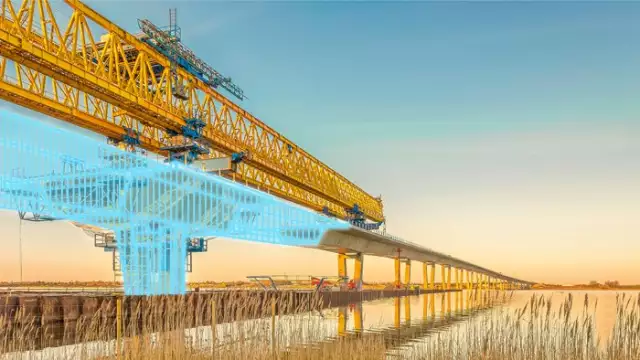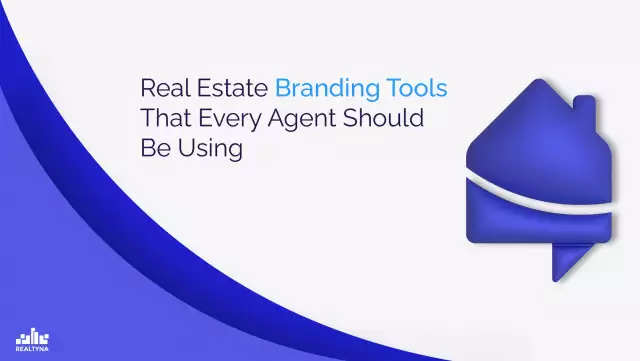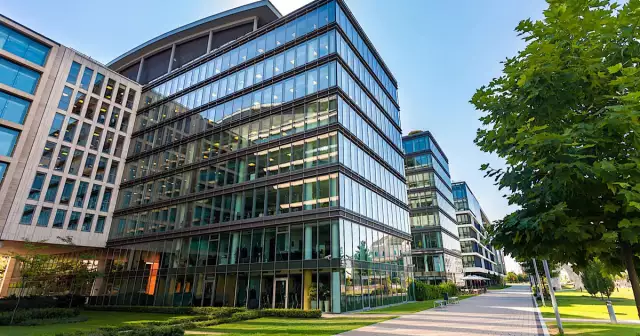Construction's Branding Problem Can be Solved With a Technology Focus
Construction's Branding Problem Can be Solved With a Technology Focus
July 28, 2022
Tooey Courtemanche
Order Reprints
No Comments
 Courtemanche
Courtemanche
My father was a banker, but he was a builder at heart which meant he was constantly remodeling our houses and then selling the improved product. Growing up, I was always surrounded by builders, was captivated by the sounds and smells of construction, and was fascinated not only by the process of construction but also the masterminds behind it. By the time I was old enough to start working, I got a job at a cabinetry shop. Seeing the grit, innovation, and skill of these folks day in and day out gave me an immense respect for the trades.
I was lucky enough to learn at an early age that at the heart of the construction industry are incredible people. Sadly, many of these folks have reached retirement age and left the industry, and now one of the biggest challenges construction faces is attracting and retaining enough people—and specifically, those in the trades. Young people today simply aren’t as exposed to construction as past generations were, and to make matters worse, trade contractors also have a “branding” problem. How do we begin to correct these misperceptions and attract more people—especially from the younger generation—to the trades?
High Demand, Too Few Workers
How did we get here? One reason is that the industry’s labor shortage never fully recovered from the 2008 recession, and the pandemic put even more demand on an already strained industry. Both of these resulted in a rapid departure of baby boomers from the industry, taking decades of knowledge and experience with them.
At the same time, many tout a four-year degree as the only path to success. This push toward higher education has coincided with the decrease of vocational arts from high schools. One of the highlights of my high school education was shop class. The projects were mundane like water pump lamps, but what I remember most is the sense of doing something meaningful with my hands. Today, sadly, shop is not part of our society to the degree it once was, and that means most kids don’t get exposure to this valuable experience. It also means the younger generation is not being encouraged as much to explore a path outside of higher education. Too few people realize that in many cases, they can earn a six-figure salary in the trades without racking up student loan debt—which, according to Forbes, clocks in at $28,950 per borrower on average. And, many of those with student debt don’t have a degree to show for it; according to NPR, nearly 40% of those with student loan debt don’t finish their degree in six years.
Ultimately, much of this comes down to a misconception of the trades. According to Forbes, a survey conducted by Stanley Black & Decker Inaugural Makers Index found that 23% of young people disagreed that skilled trades work with cutting-edge technology and 18% disagreed that the work is high in demand. This was in stark contrast to the reality of the trades, with 89% of skilled tradespeople saying they work with cutting-edge technology and 94% saying their jobs are high in demand.
The reality is that demand isn’t going anywhere—especially with a persistent labor shortage. Hospitals, schools, roads, and bridges will always need to be built. Even if the current supply chain issues were to resolve overnight, the industry still wouldn’t be able to get through its project backlog without more workers. The ultimate limitation isn’t the lack of demand or the supply chain—it’s a shortage of skilled labor.
At a Tipping Point
We often hear the terms “workforce shortage” and “labor shortage” thrown around a lot in construction. But when we look at industry trends, there are really two distinct shortages. Broadly speaking, construction has felt the effects of a “workforce shortage” across the entire industry for the past 10-plus years. But there’s another, more urgent shortage which is the “skilled labor shortage,” or “trade shortage”—that is, the industry simply doesn’t have enough folks with skills in the trades.
Associated Builders and Contractors (ABC) Chief Economist Anirban Basu sums this up nicely: “The issue relates to skill sets. While many refer to the current circumstances as a labor or worker shortage, it is perhaps more properly characterized as a skills shortage.”
Construction is also getting more complex, which means finding skilled labor is only going to get more difficult with time. Faced with increased demand and too few skilled tradespeople to meet this demand, the industry now finds itself at a tipping point.
“With many industries outside of construction also competing for increasingly scarce labor, the industry must take drastic steps to ensure future workforce demands are met. In 2023, the industry will need to bring in nearly 590,000 new workers on top of normal hiring to meet industry demand, and that’s presuming that construction spending growth slows next year,” says Basu, referring to the U.S. industry.
Despite the macro perspective—and in some cases, because of it—the industry is actually in a prime position to bring in more workers. One reason is the “Great Resignation.” In early 2021 across all sectors, many employees voluntarily resigned from their jobs. This has undoubtedly created challenges across various industries. But at the same time, with so many folks seeking a more fulfilling and meaningful career, this presents a great opportunity for the construction industry to boost its recruitment efforts and demonstrate the viability of a career in construction.
Specifically, now is the time for construction businesses to recruit talent from other industries that specifically have a technical skillset that today’s tradespeople need. Most importantly, their skills are directly applicable to construction—particularly in regard to VDC, BIM, CAD, or using a construction management platform.
One way construction businesses can attract and retain these workers is by focusing on building a positive company culture. Ten or so years ago, “company culture” wasn’t something that would have been considered one of the most important factors for business adaptability. But that’s all beginning to change.
Good workplace culture pays back dividends by allowing companies to attract and retain world-class talent, even in a competitive market. In fact, I’ve talked to countless customers about what helped them weather the volatility of 2020 the most. I heard two things the most frequently: one, having the right technology, and two, having a healthy company culture.
The pandemic also changed the course of the future workforce. The good news is that students are considering alternatives to four-year degrees more than ever. According to a study by ECMC Group, a “teen’s likelihood of pursuing a four-year degree decreased 23 percentage points between May 2020 and September 2021, down to 48% from 71%.” More than half of those surveyed said they were “still open to something other than a four-year degree.”
One reason for this shift is trade school enrollment. NPR notes that two-year public schools have been seeing a decrease in enrollment, while skilled-trades programs are seeing an uptick in enrollment numbers. In fact, from 2019 to 2021, construction trades enrollment has increased by 5%. It’s an indication that trade degrees are gaining in value compared to traditional four-year degrees. And with more students seeing the value of a career in the trades, it’s a great opportunity to further attract the younger generation to the industry.
How to Combat the Labor Shortage
Clearly construction is poised to attract more talent, and desperately needs to do so. But how do we begin to change the misperceptions of the trades and inspire folks to pursue a career in construction? Some organizations are already doing incredible work in this area. [KM3]
Take the ACE Mentor Program of America (ACE), which is making a massive impact. ACE is an award-winning after-school program designed to attract high school students to careers in Architecture, Construction, and Engineering, including skilled trades. ACE is a federation of more than 75 affiliates operating in 38 states and Canada, delivering the program for free to more than 10,000 high school students each year.
Tom Laird, President and Chief Executive Officer at Gilbane Building Company shared with me, “Gilbane has been a proud long-time supporter of the ACE Mentor program because of its critical work to engage students in the A/E/C industry and support their growth beyond high school graduation. We know that program alumni demonstrate capacity, maturity, and competence when they enter our industry. ACE has extended industry mentoring and internships to support underrepresented college students which is an important part of helping to diversify the industry’s pipeline of talent. About 70% of ACE program participants are students of color and about 40% are women. For Gilbane, it’s a win-win to support the program: our employees who are ACE mentors enjoy giving back as role models, and the program is helping to cultivate the next generation of builders.”
Other organizations, such as the Sheet Metal & Air Conditioning Contractors’ National Association (SMACNA), have taken similar steps to boost recruitment and generate more interest in construction careers. The group launched Ignite Your Career, a workforce development campaign designed to raise public awareness for career opportunities in the HVAC and sheet metal industries and support recruitment efforts. SMACNA has also advertised the campaign on social media to attract the younger generation.
Other programs, such as the AGC Education Foundation’s Construction Adventure Camp, teach construction skills to children. Participants learn basic engineering and design concepts in an interactive setting, giving them a chance to discover a passion for the trades at an early age. Heavy Metal Summer Experience is another great summer camp designed to expose high school youth to the trades. Participants get hands-on experience in a sheet metal and piping shop where they get to fabricate projects using tools in the shop. The organizers are looking to create a playbook so other sheet metal companies can support similar camps around the country.
In a similar vein, Judaline Cassidy of Plumbers Local 1 NYC is a 25-year veteran of the plumbing industry and founder of the non-profit Tools & Tiaras Inc. The group encourages girls and young women (ages 6-17) to learn trade skills by exposing, inspiring, and mentoring them to excel in these areas through its hands-on workshops and summer camps.
Industry leaders are similarly looking to find ways to attract more talent to the industry. Donnel Baird is one such leader who is empowering underserved communities to engage in the construction industry. He is the founder and CEO of BlocPower, a Brooklyn-based climate technology company that is not only addressing the skilled labor shortage but is also delivering economic opportunity to underserved communities. BlocPower’s workforce development program, Civilian Climate Corps, addresses both environmental and economic justice by bringing green jobs to neighborhoods hardest hit by gun violence. It recruits residents in low- to moderate-income communities or communities of color, as well as those who are unemployed or underemployed. I had the opportunity to meet Donnel recently at our corporate headquarters, and I have no doubt that he will make a large impact. In fact, the incredible work Donnel and his team are doing has already made an impact not only on the industry but is also driving countless communities toward a better future.
Other well-known leaders, such as TV host Mike Rowe, have also become active in driving workforce development efforts. Rowe runs the mikeroweWORKS Foundation, which awards scholarships to students pursuing a career in the skilled trades. His website, mikeroweWORKS.org, offers additional tools and resources that aim to help close the skilled labor gap. Mike and I have been kindred spirits when it comes to promoting the trades, and I applaud Mike’s tireless efforts on this front.
Supporting these creative leaders and organizations, and giving young people these opportunities to engage in the trades—as I did when I was young—is so important. I know from personal experience how impactful and inspiring it can be. While this will help move the needle, we must also continue to educate folks about construction, incentivize high schools to encourage more young people to attend trade schools, and ensure shop classes are offered in high schools. All of this gives more young people the chance to discover an interest in the trades; so when they’re asked “What do you want to be when you grow up,” they’re able to choose something that truly energizes and inspires them—which for many young people, including myself, means the trades.
Ultimately, the only way the industry can meet growing demand is if we get more people to join construction—both from the existing and future workforce. To do this, we need to use the tools we have available to help change the perception of the trades and demonstrate why the opportunity to enter the industry has never been greater.
Before we get into the stuff about degrees and the programs that mainly focus on high school students, what about a graf here about drawing talent that has left other industries? Still young talent, but maybe people who have already gone to college or are in the workforce and how their skills are directly applicable to construction, particularly in regard to VDC and using construction technology platforms? I think our template, here, needs to be the high school student as well as the people like Peter Gibbons from “Office Space,” who found meaning and happiness from leaving Initech and learning a skilled trade. Also, Jennifer Aniston.
This is one important piece solving this challenge / tackling one part of the problem. We also need to attract folks from other industries who have technical skills. But lots of ways to tackle this problem - one way to look at this is through culture to attract these folks into the industry.
Marketing construction to existing workforce to show them you can build a successful, fulfilling, lucrative career.





